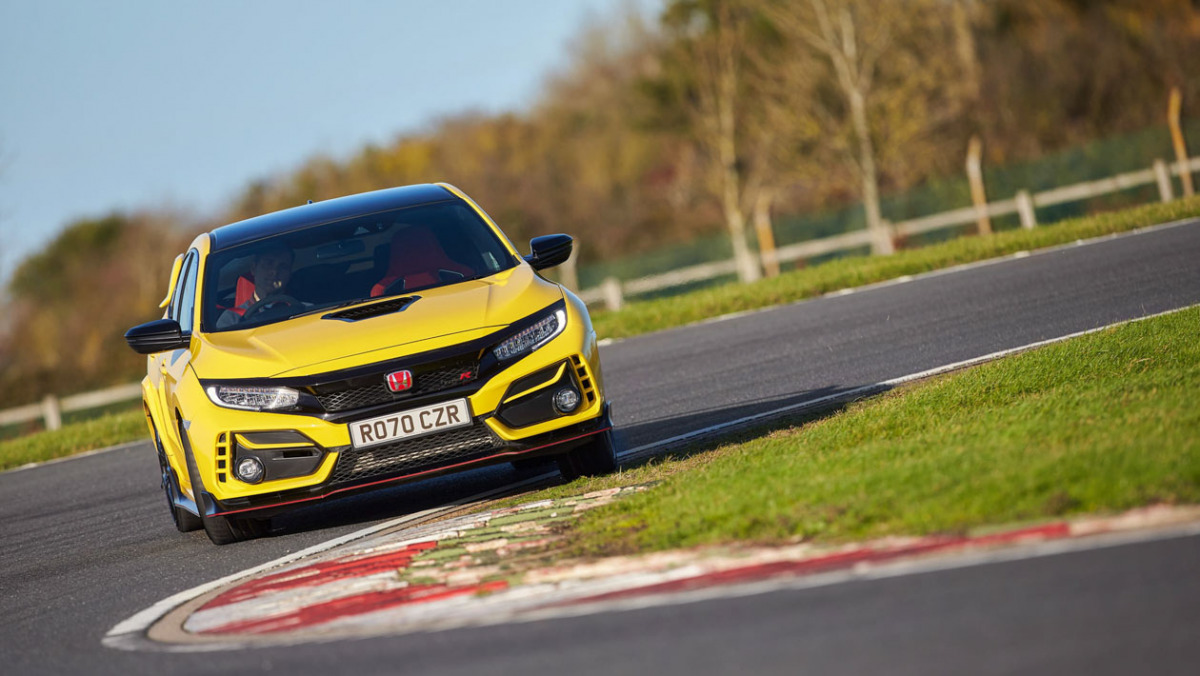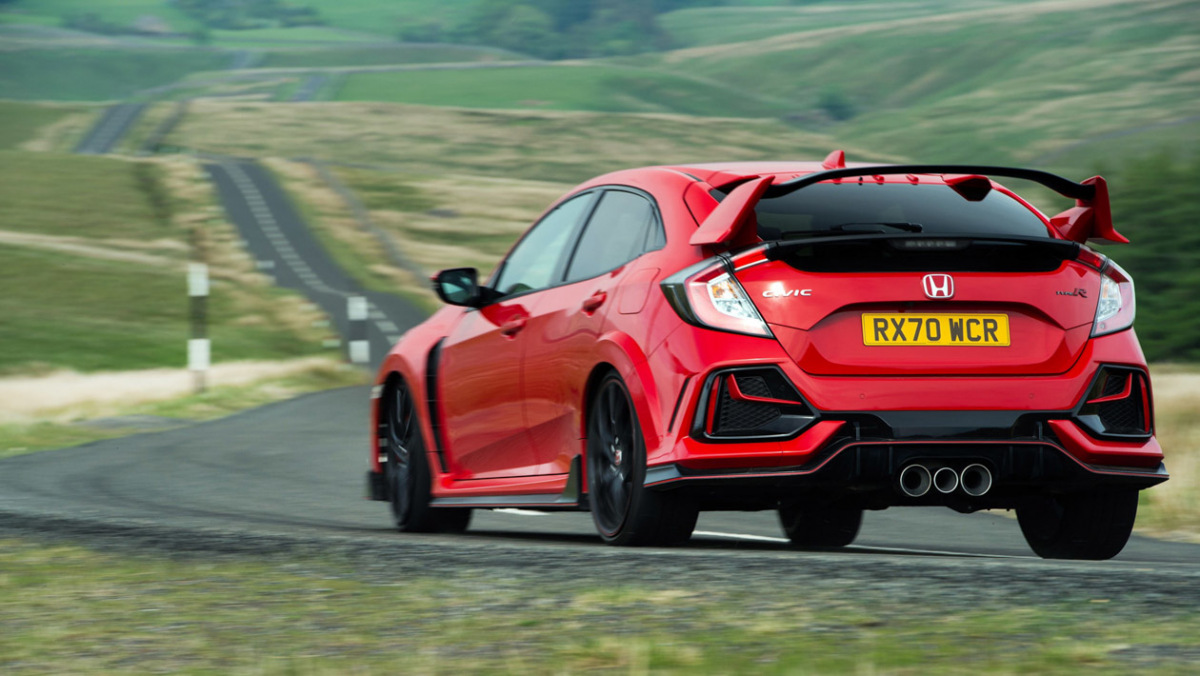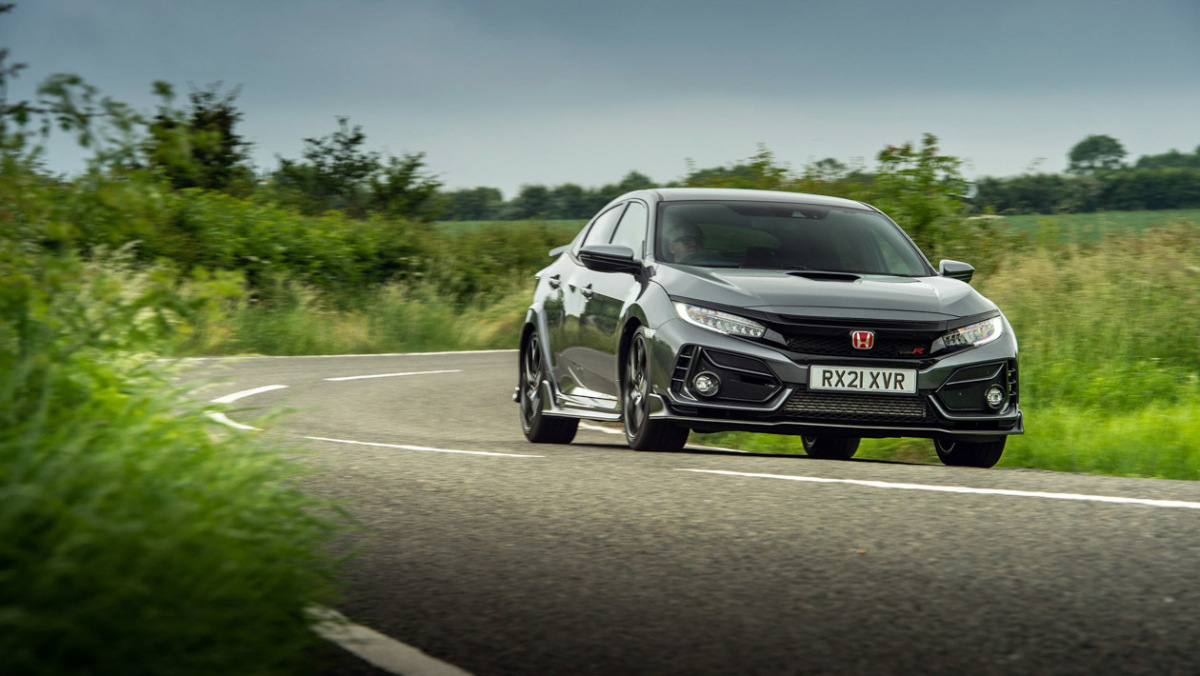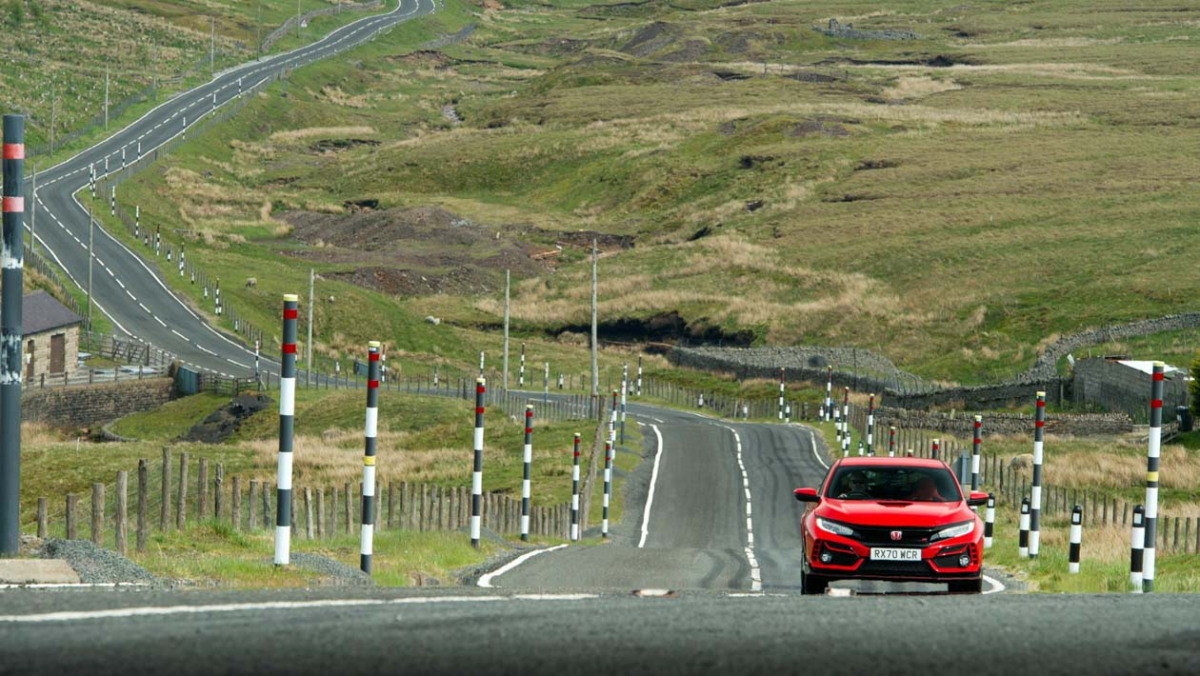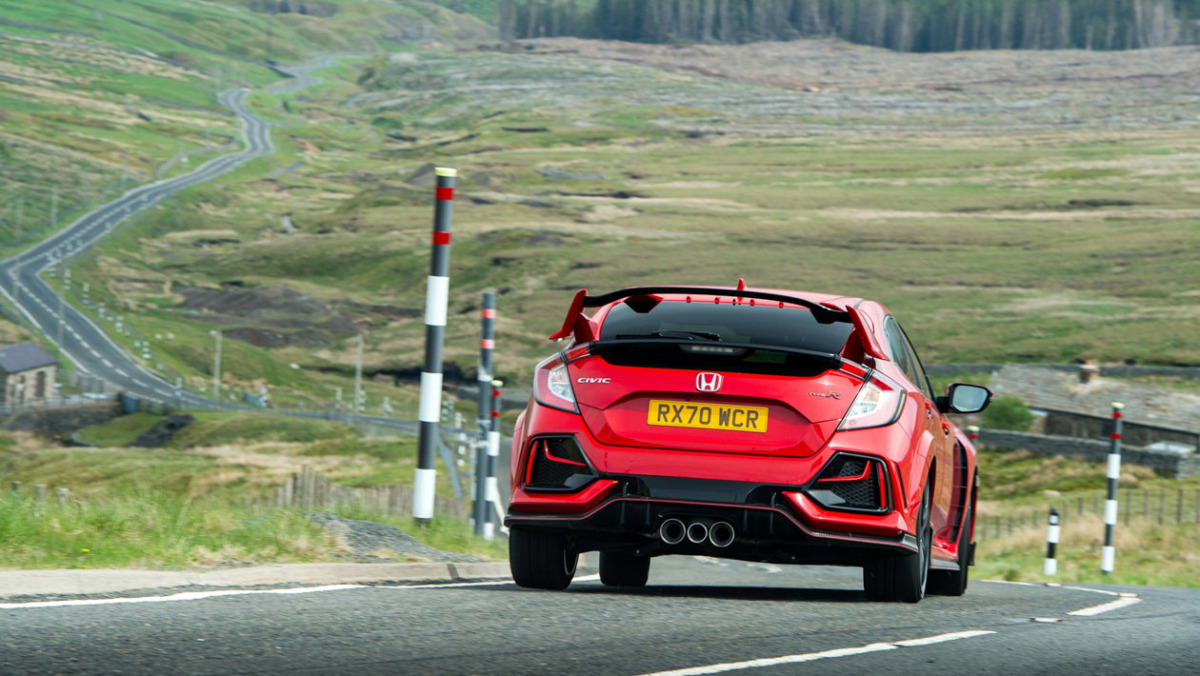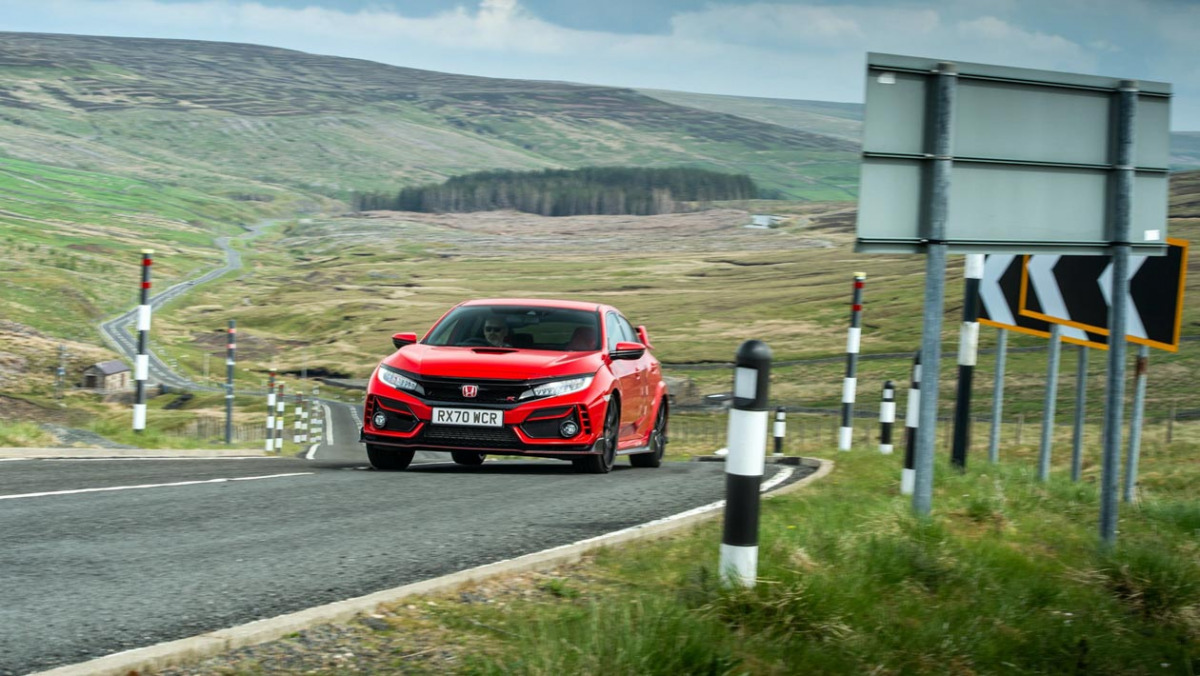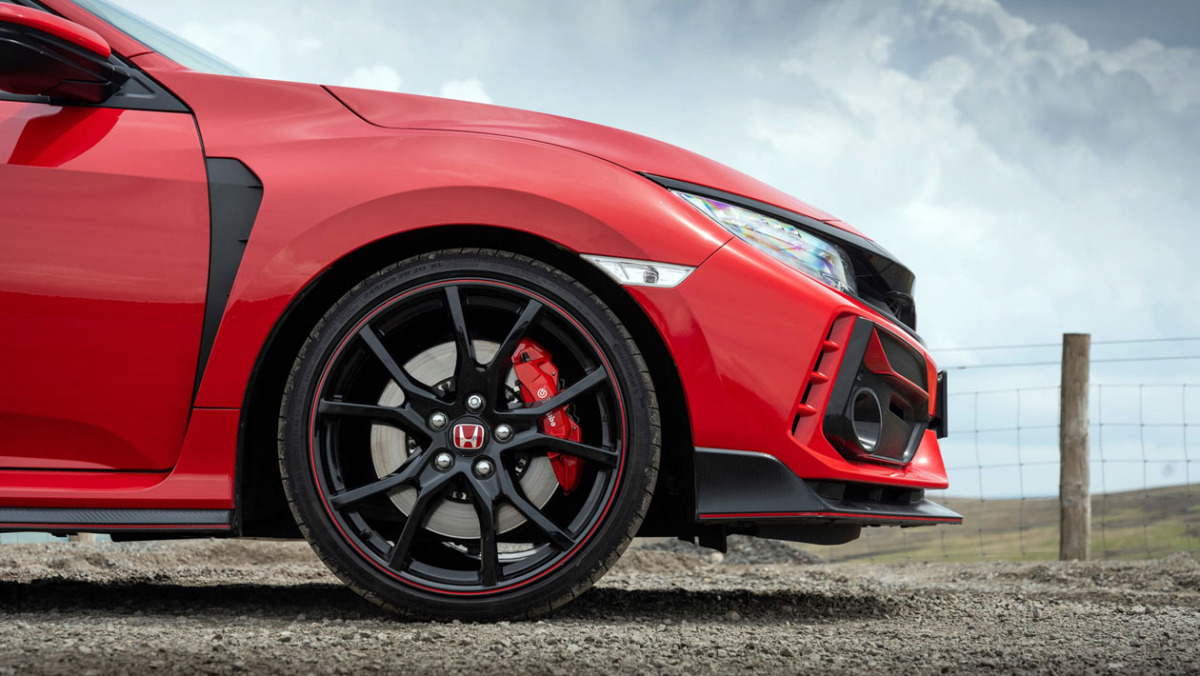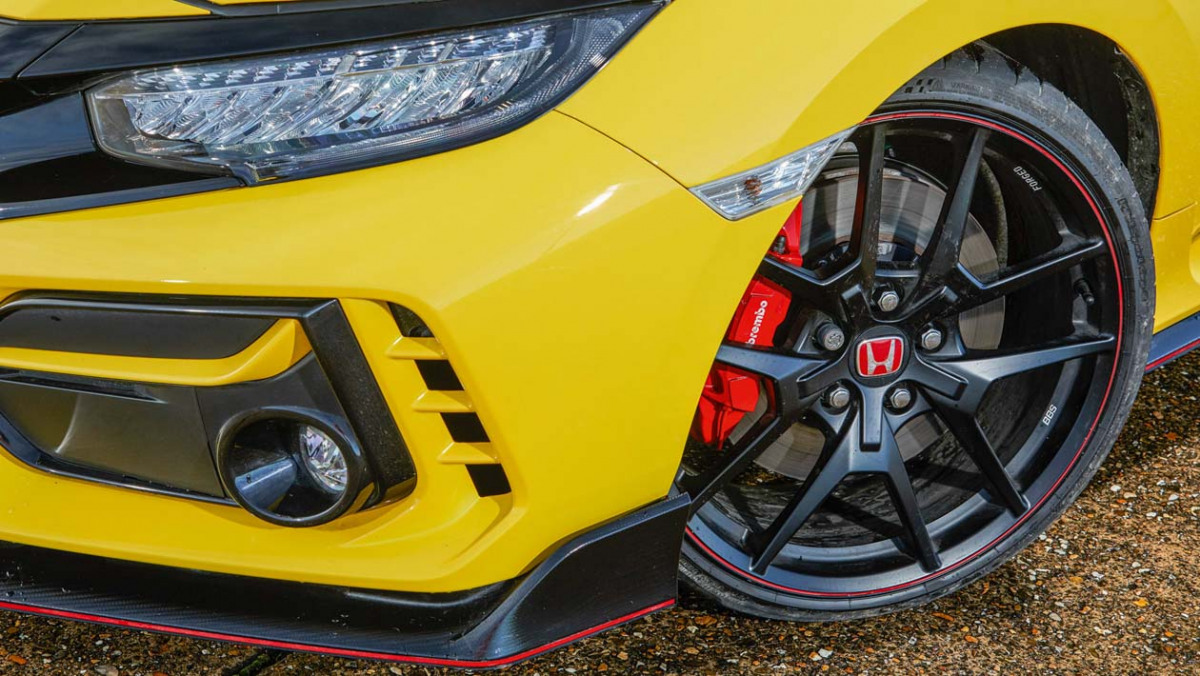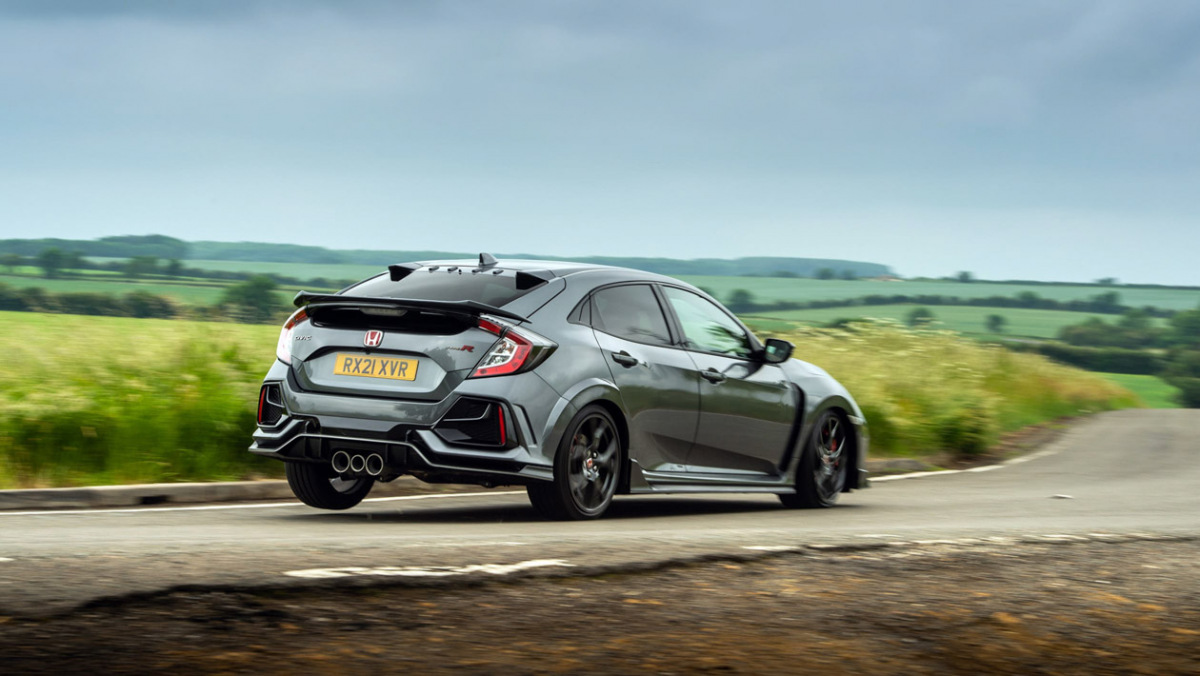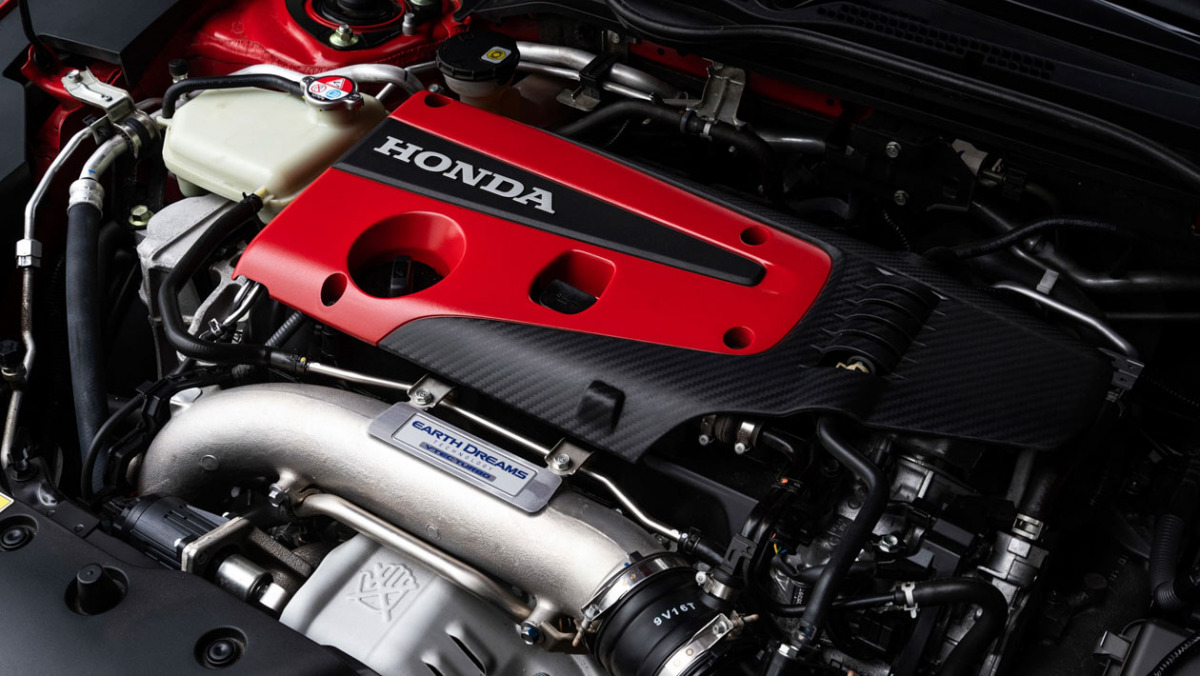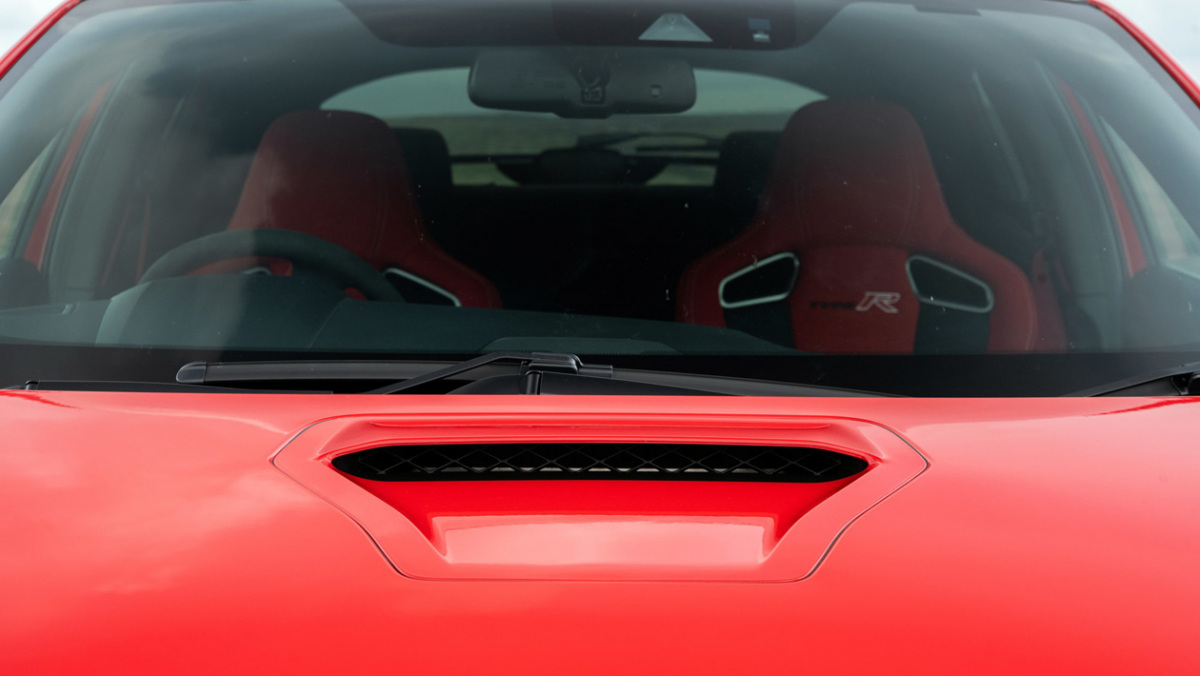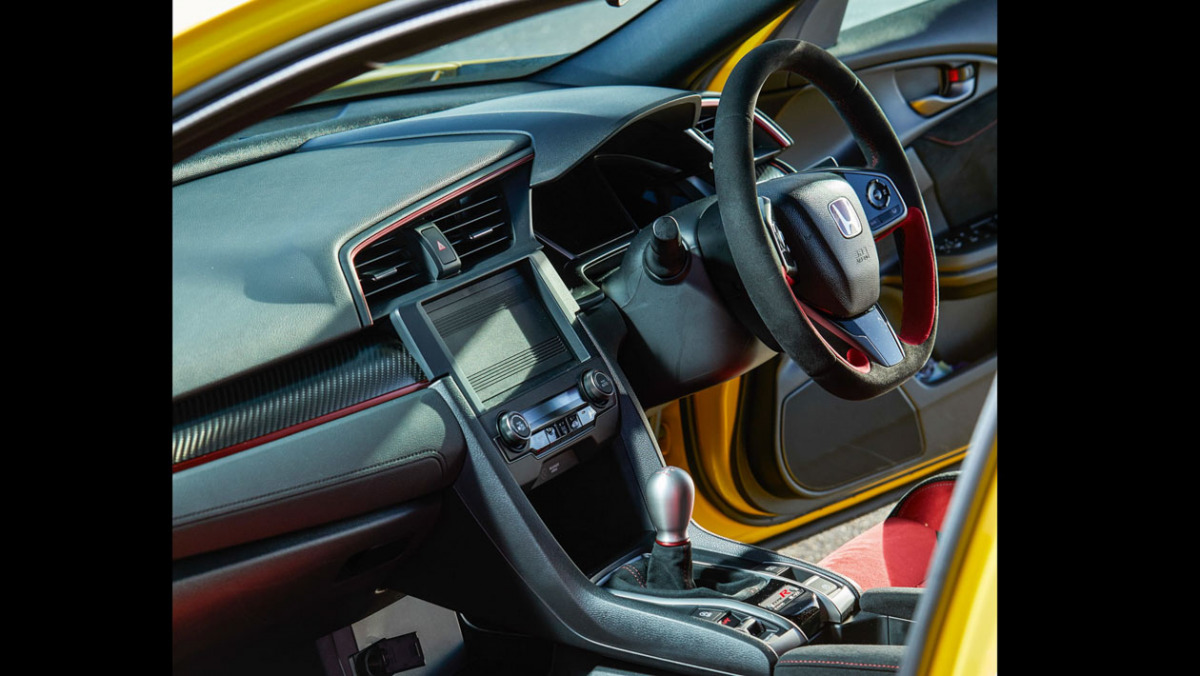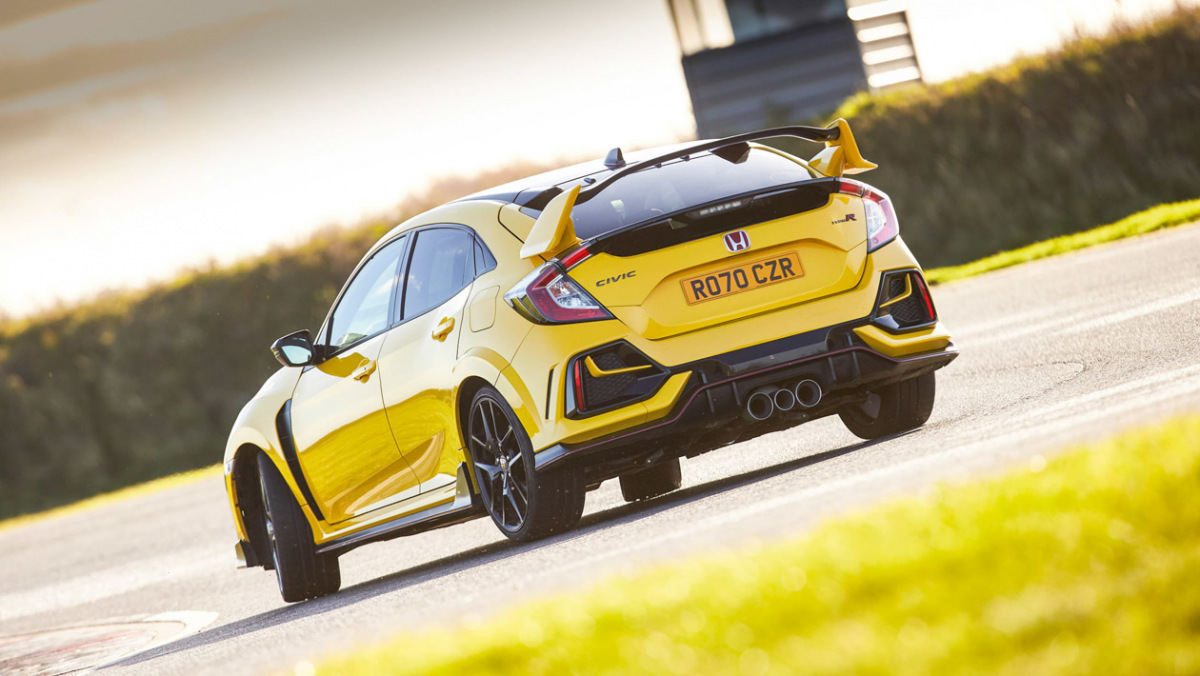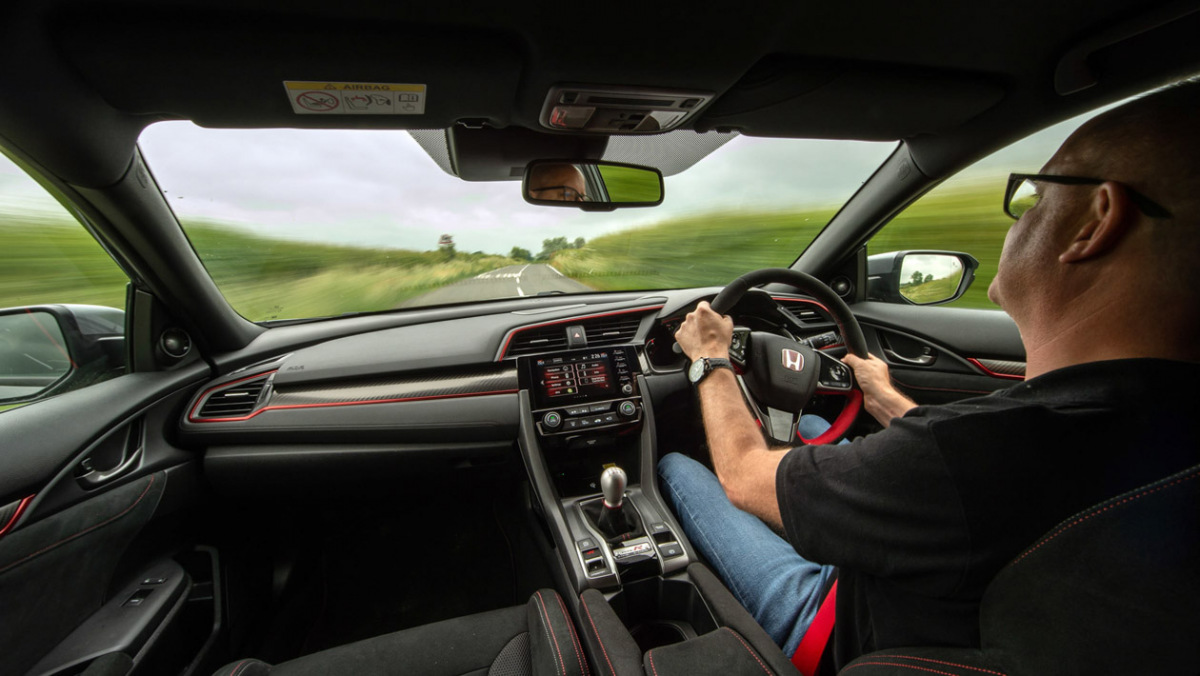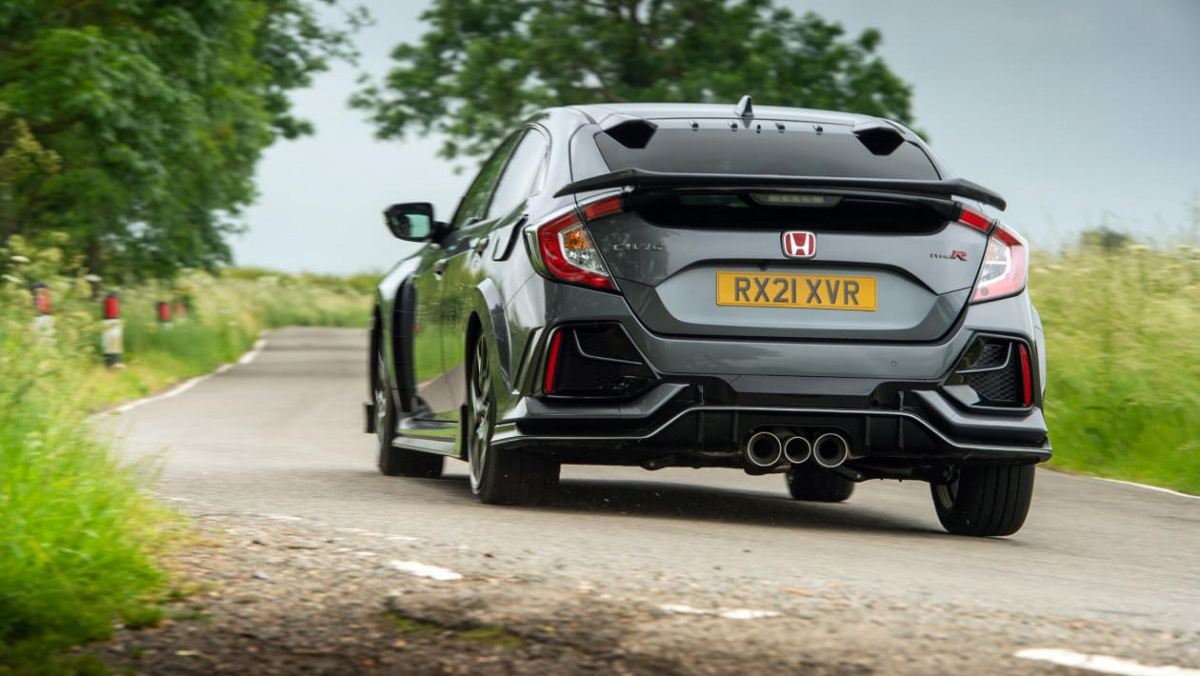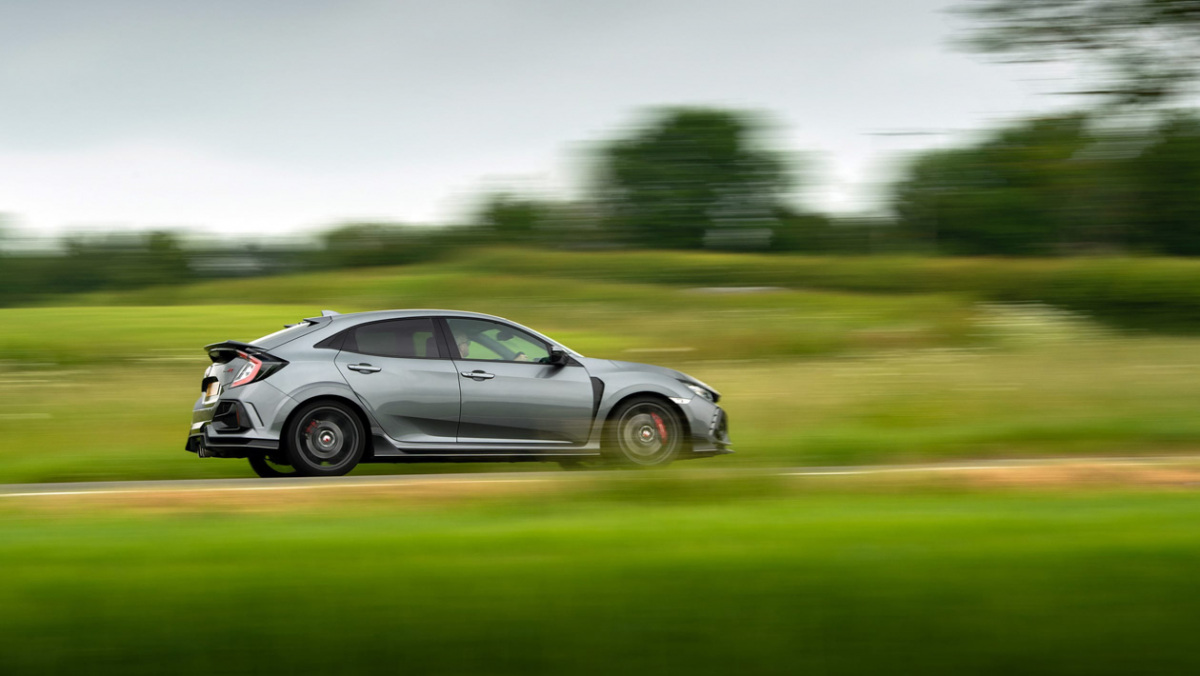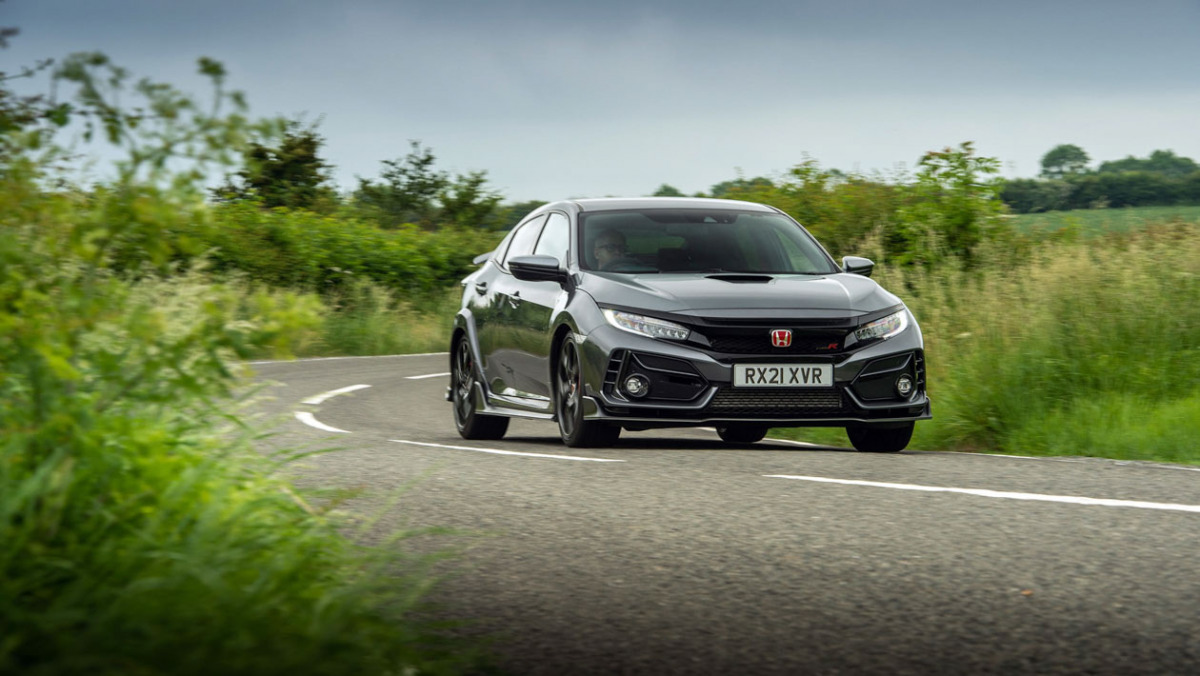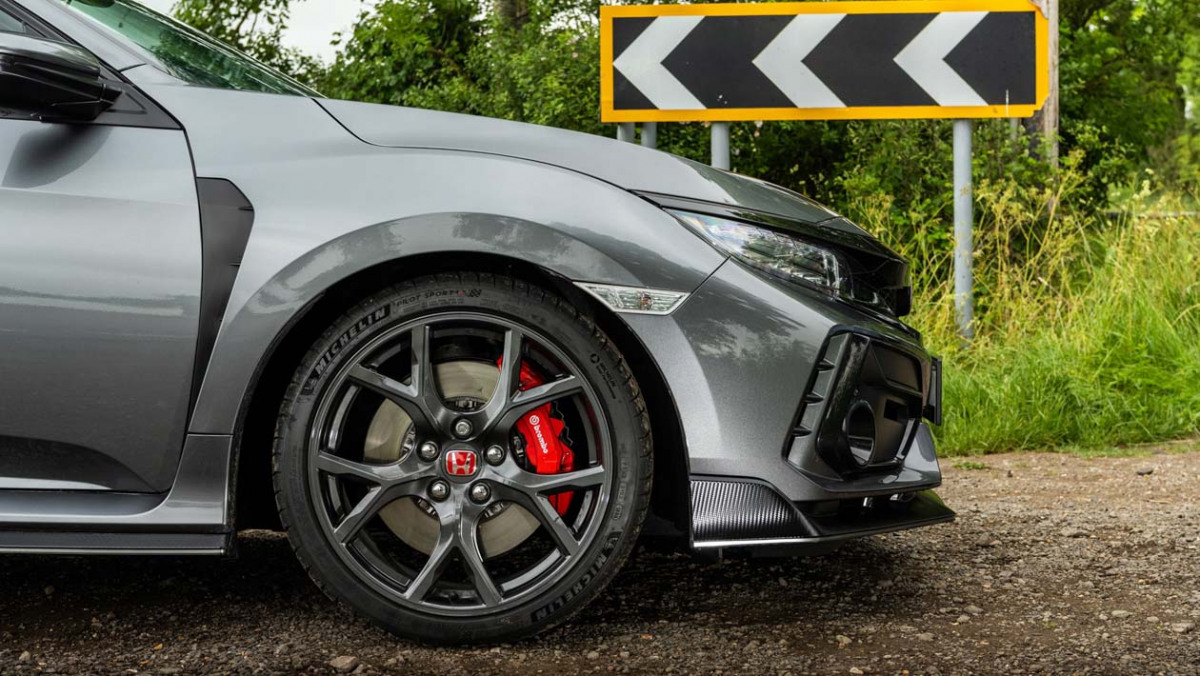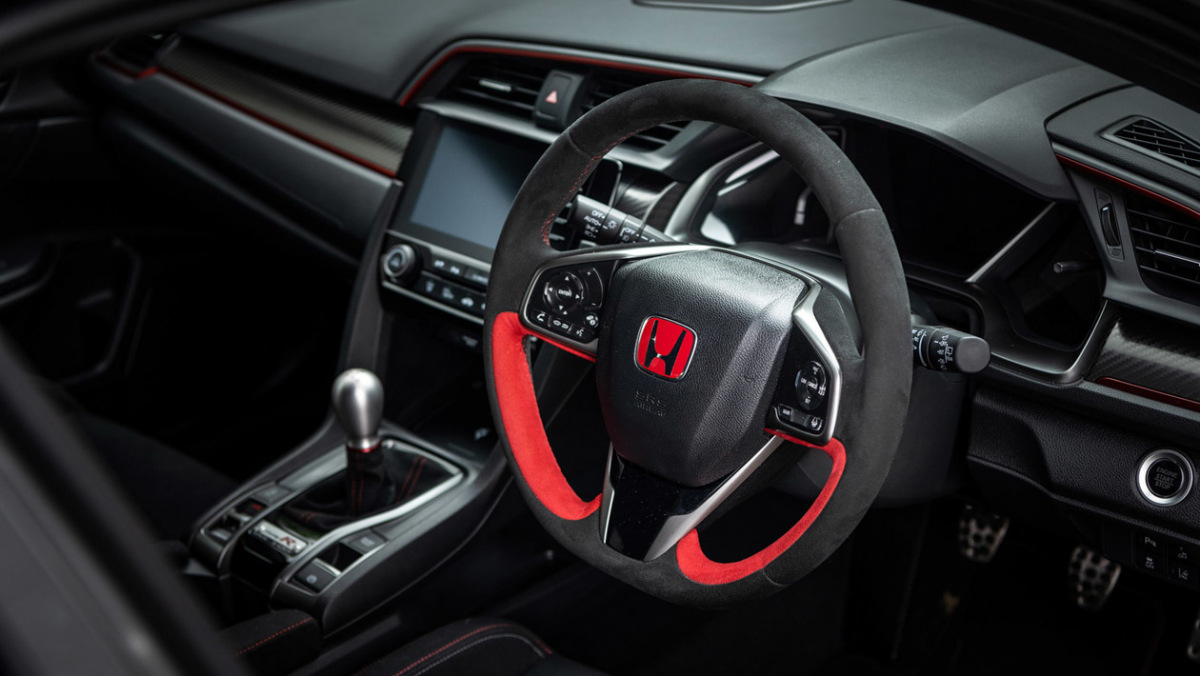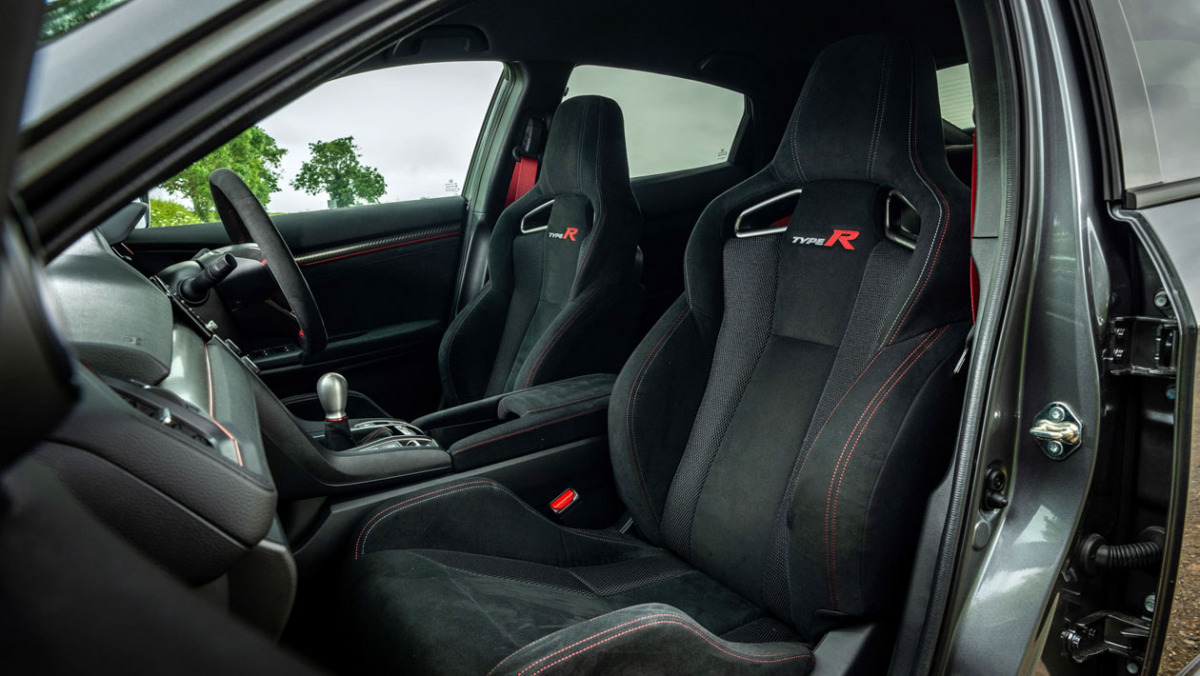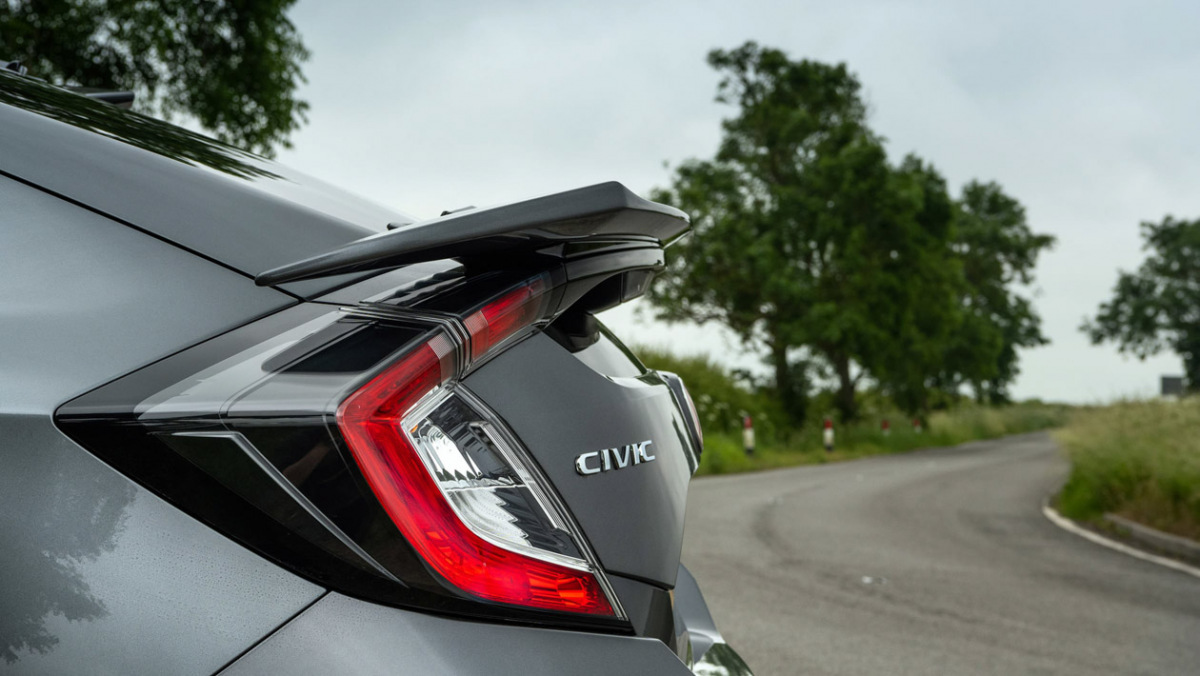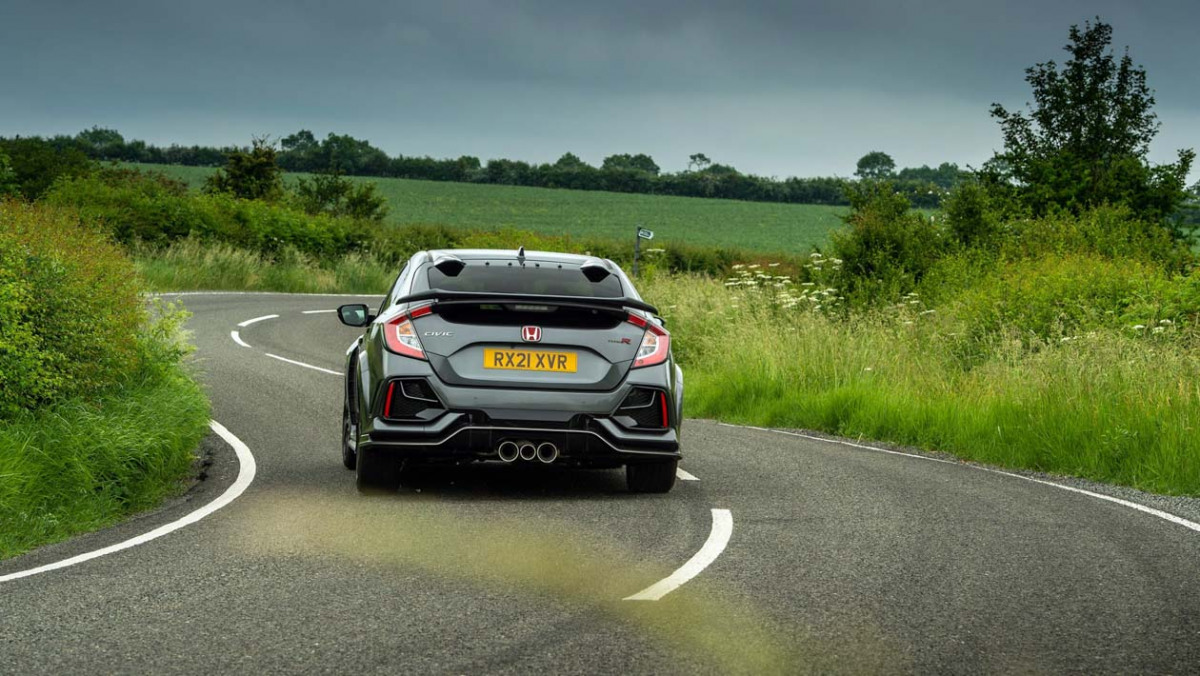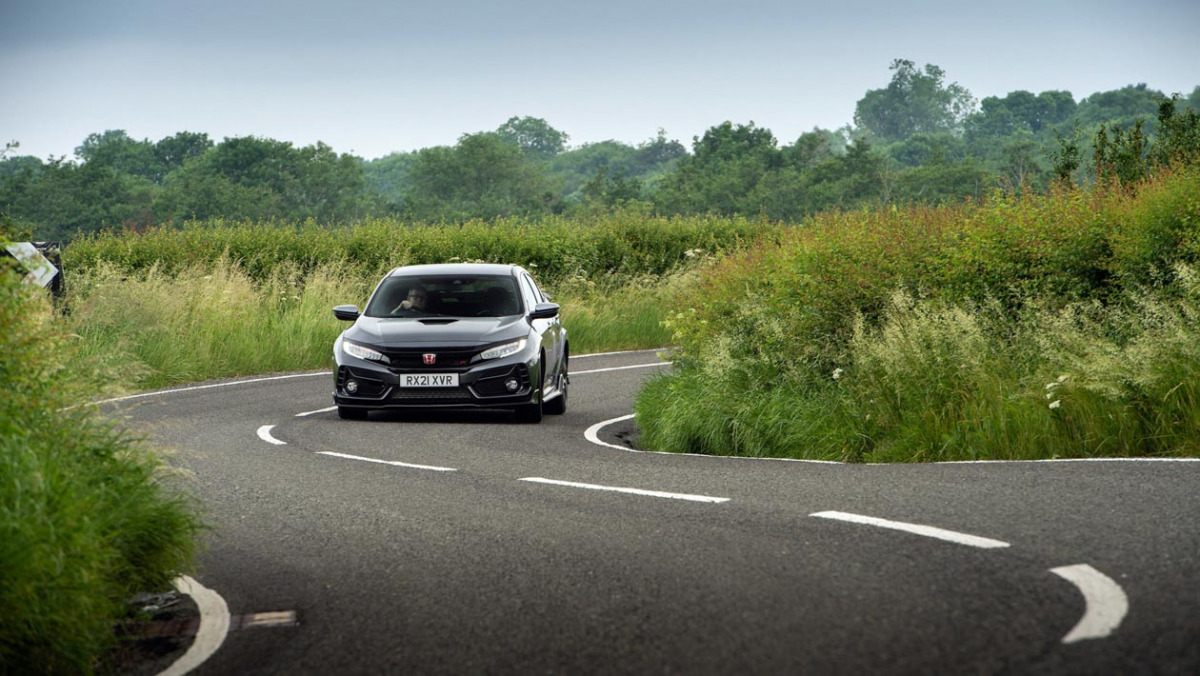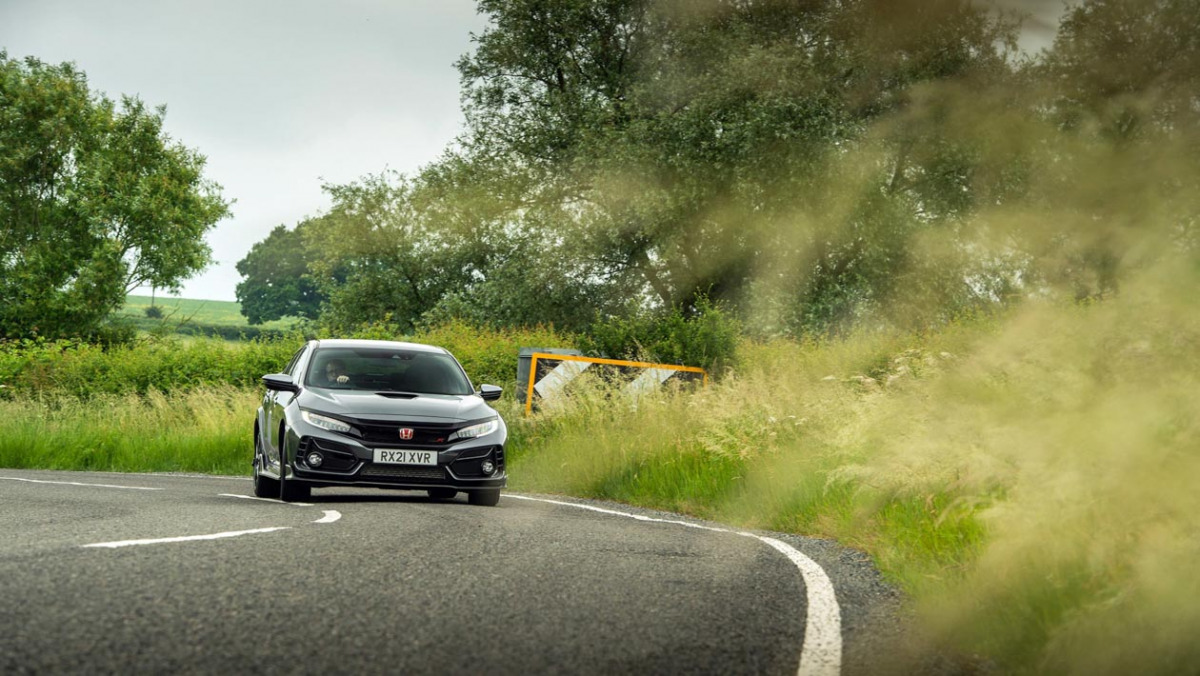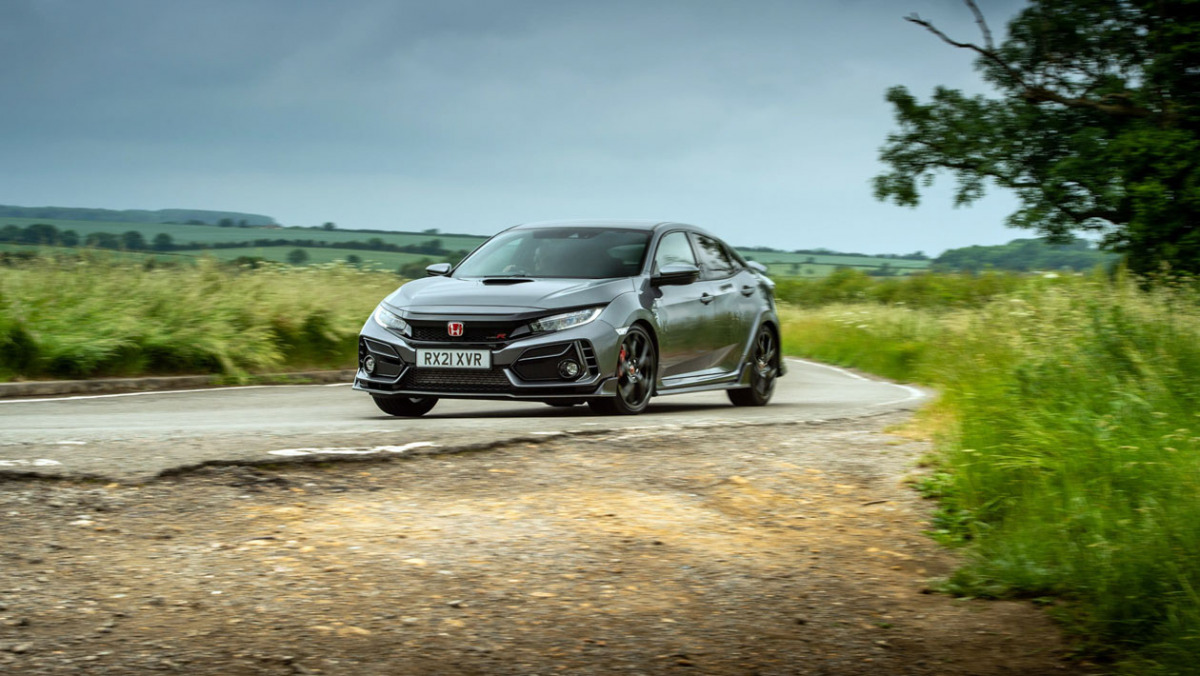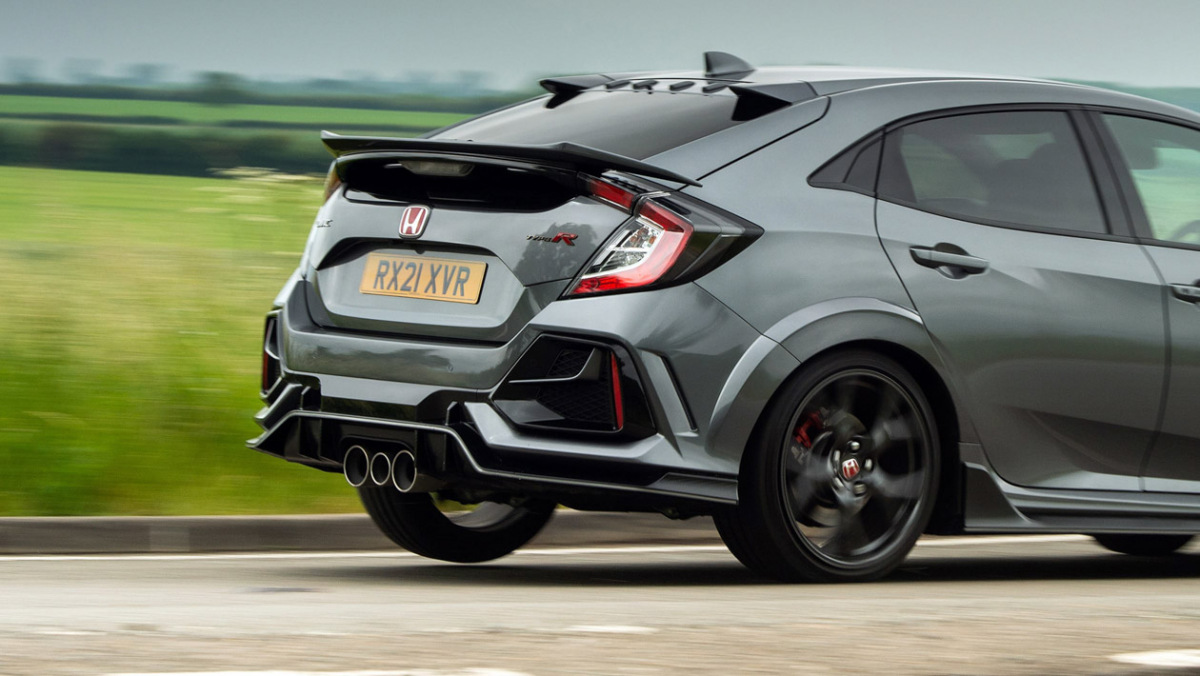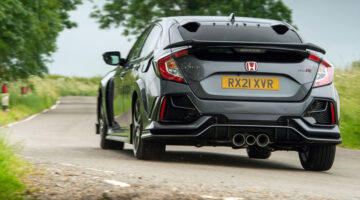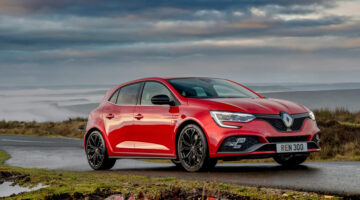The Civic Type R is one of the most alluring performance cars on sale regardless of price
| Balance, powertrain, brakes, driver engagement – it does it all | |
| Some will never be able to get past its looks |
The Honda Civic Type R has consistently punched above its weight since the current generation arrived in 2017, outdoing its key rivals again and again. So when time came to give it a subtle update, Honda took the sensible route keeping a light touch, while introducing a few new derivatives along the way.
Yet while it would have been nice to see more of a change aesthetically, those who are put off by the spaceship styling are missing out, because it’s quite simply the finest hot hatchback to come to market since the VW Golf GTI Clubsport S and Renault Sport Mégane R26.R.
The astonishing thing is that for the driver, and indeed passengers, it’s nearly without compromise. The Golf and Mégane were intense. No back seats, trackday-spec rubber, reduced sound deadening, caged and fitted with plastic windows in the case of the Renault, but the Civic has none of the same compromises – a big boot, spacious rear seats, and a stunning primary and secondary ride, despite the 30-section tyres that we’ll come back to later.
In short, the Civic Type R doesn’t feel like a hot hatchback, but a superbly engineered sports car that just happens to be front-wheel drive. As a leader of front-drive performance car development in the ’90s with models such as the DC2 Integra Type R and Prelude, it’s remarkably fitting that Honda fill this niche in 2019.
Don’t lament the turbocharged engine, bloated proportions or flakey interior if you’re a VTEC diehard either, just enjoy the Type R’s uncanny ability to constantly surprise, delight and amaze
Honda Civic Type R: in detail
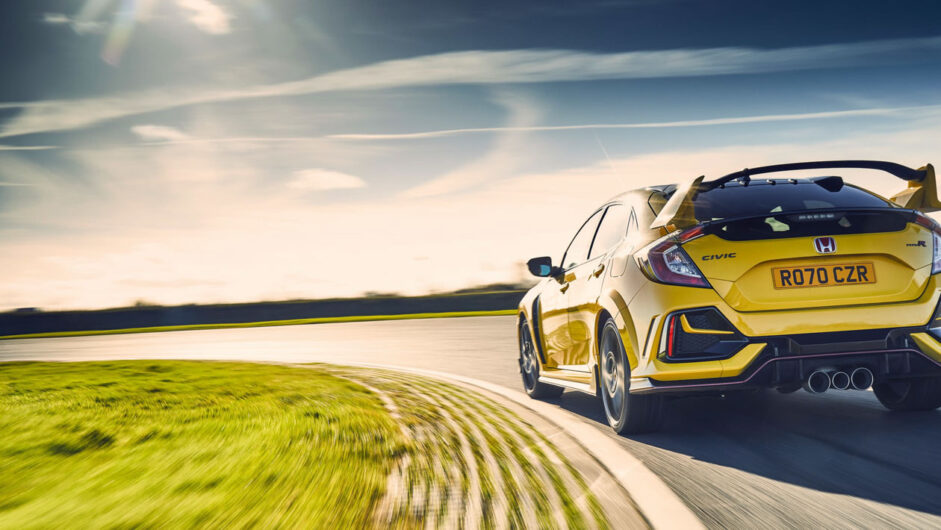
Prices, specs and rivals
Starting at $47103 for the well-equipped entry-level model, all the Type R’s performance paraphernalia comes standard including 20-inch wheels, Alcantara bucket seats, LED headlights and that arresting body kit. Drop another $2700 on the GT pack and you’ll get dual-zone climate control, front and rear parking sensors, satnav and blind spot monitoring – desirable, but not essential additions in other words.
As part of its 2020 update, the Honda introduced two further variants which sat on either side of the scale in terms of focus, with the Sport Line removing the wing, but adding more sound deadening and a smaller set of 19-inch wheels and Michelin PS4 rubber. At $48,450, it sits between the two established models, but comes with all the added kit of the GT model inside.
At the other end was the Limited Edition, and we say ‘was’ because all 20 units destined for the region were snapped up before it even reached the dealership. As well as the fab yellow paintwork and forged wheel design, also came less interior deadening and an even more intense and distilled Type R experience. It’s a sure-fire future classic, yet at $54,740 felt like a sure-fire bargain considering its rarity.
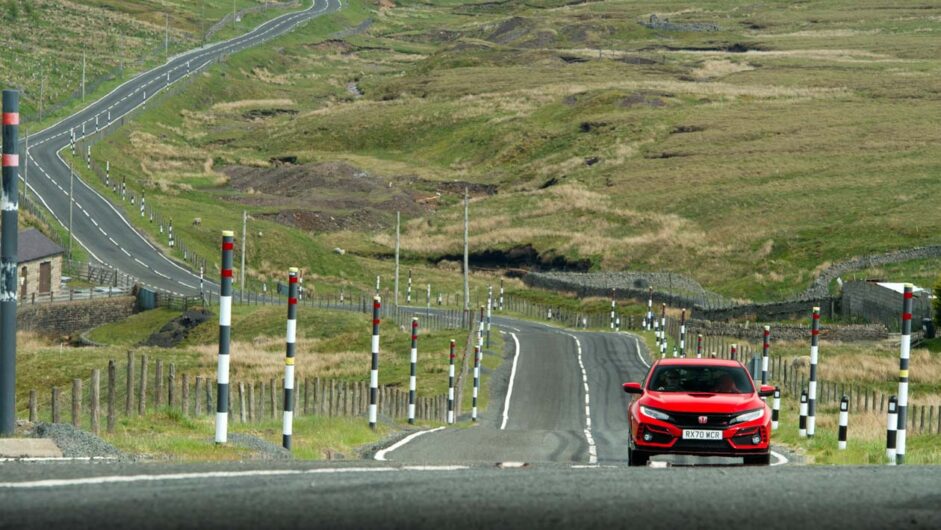
As with many Japanese cars, the options list is short, with only various exterior carbonfibre components threatening to rid you of yet more hard-earned cash at the dealer.
Yet while the price has indeed gone up, so too has its rivals with the new Hyundai i30 N Performance starting at just under $46k and Golf GTI Clubsport sitting costing from just under $52,000 basic, and rising to more like $58,000 once fitted with appropriate wheels and dampers which should really be standard.
The Renault Mégane RS is currently the most closely matched in terms of power, performance and capability, and its new two-model line up at $45,153 and $50,628 for the RS300 and Trophy sit closest to the Honda in terms of price. Its 297bhp power figure is also down on the Civic, and it lacks adaptive dampers too. The latest Volkswagen Golf R is an odd case, lacking the polish and poise of its predecessor. It does, however, maintain a potent combination of desirability and strong residuals, but where the old car was an easy car to recommend, there’s now just too many chinks in its armour to be any more than merely average. The VW group’s other offerings, in the form of the Cupra Leon and Audi S3 Sportback, could also be considered at $48,075 and $50,374 respectively.
- Engine, gearbox and technical highlights
The 2-litre turbocharged four-cylinder engine that underpins the Civic Type R is the same basic unit found in the previous-generation car. A relatively conventional engine, the 1996cc DOHC four-cylinder utilises both VTEC variable valve timing and a high-capacity single-scroll turbocharger to produce its 316bhp and 295lb ft of torque.
That torque is available on a plateau of revs between 2500 and 4500rpm, and it’s this spread throughout the rev range that provides the biggest point of contrast against Honda’s previous Type R engines. The unit itself features direct fuel injection, forged conrods, and what Honda refers to as a lightweight crankshaft.
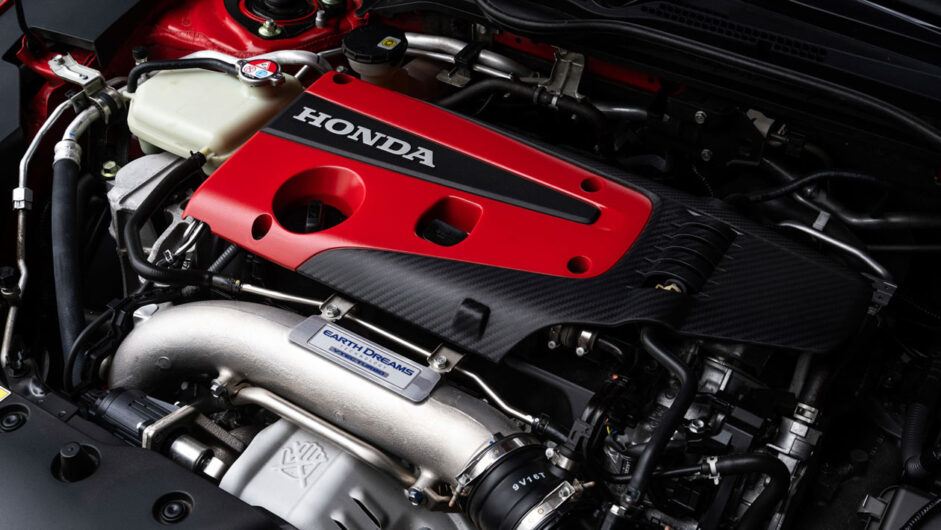
The engine itself isn’t totally free of lag – catch it off-guard and it can take some time to wake up – but once its lungs are full, the Civic fires you down the road at an almost ridiculous rate. The acceleration barely wanes at high engine speeds too, with a satisfying hard rev-cutout if you get a bit over excited.
There wasn’t much wrong with the gearshift in the FK2 – it was one of our favourite aspects of the car – but it’s been further refined here, and also includes a lower final drive ratio. Drive is once again deployed through a helical limited-slip differential to the front wheels.
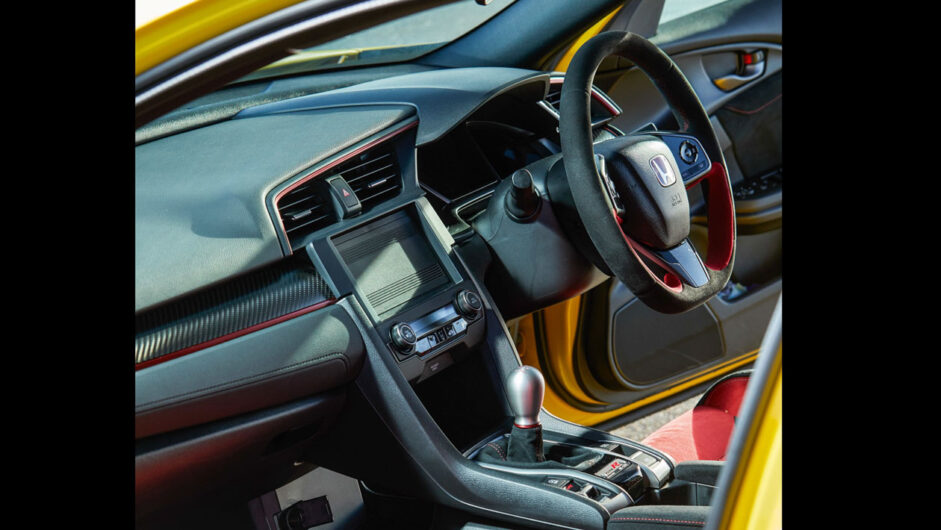
The body itself is very different from that of the previous Civic. While still a five-door hatchback, it’s longer, lower and wider than before. Despite being larger, the body in white is 16kg lighter than its predecessor, and 52 per cent stiffer (38 per cent like for like with the old Type R), while the centre of gravity drops 34mm lower. You sit lower too – by 50mm.
Honda updated the suspension too, with a new multi-link set-up replacing the torsion beam of the last two generations, while the suspension itself is more rigid to ensure it only moves in the direction the engineers intended. They’re comprehensive changes, and they have comprehensive effects.
- Performance and 0-100 time
One of the few elements carried over from the old car is the engine and gearbox. The 2-litre unit now develops an extra 10bhp, mainly through work on the mapping side of things and reducing back pressure in the exhaust.
Honda might not have chased the ultimate power output in the class, but let’s be fair, there’s nothing puny about 316bhp, particularly given that at 1380kg the Type R is significantly lighter, for example, than a Ford Focus RS (1524kg).
So despite the obvious disadvantage of three pedals and a gear lever versus a twin-clutch ’box when ranged against the stopwatch, and the traction limitations of front-wheel drive (although the Civic’s lack of wheel scrabble and torque steer is almost otherworldly), the Civic’s 0-100 time of 5.7sec is entirely respectable, and edges out a manual Seat Leon Cupra 300 by two-tenths of a second.
Top speed is impressive too. That bodykit looks less ridiculous when you consider the Type R can manage 272kph flat out. Not long ago we’d have expected that kind of top speed from proper sports cars – not least the original Honda NSX – and today you can do it, if you find a suitable stretch of empty autobahn, in a hatchback.
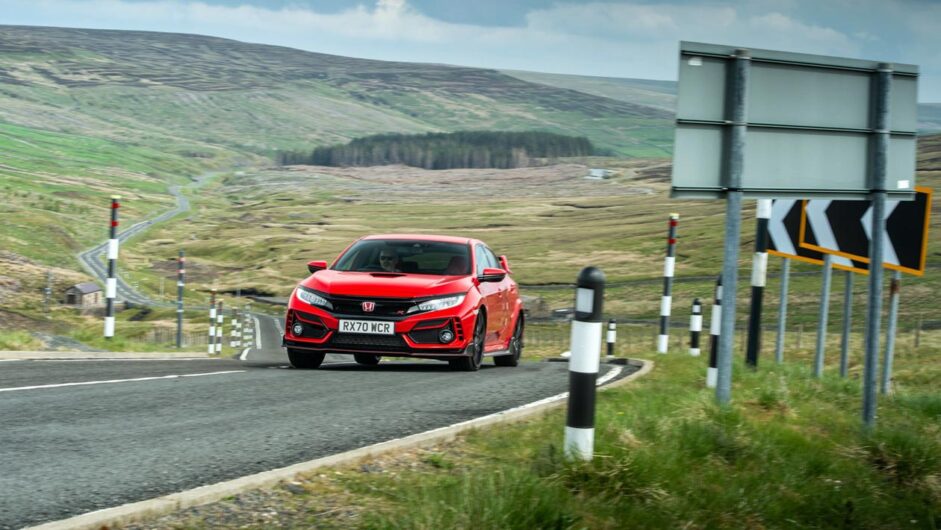
All the laggy behaviour and awkward resonances of the old engine have been banished. It pulls cleanly and strongly from around 2500rpm, then maintains that vigour unwaveringly to the 7000rpm red line.
The switch to a single-mass flywheel (compared to the dual-mass set-up of before), along with the much improved calibration, means that throttle response is sharp, the revs rising and falling notably swiftly, for example, when the clutch is in. It’s an honest, energetic power plant, with a breathy exhaust roar similar to that of an old Mégane RS and no hint of electronic fakery to the induction rort.
- Ride and handling
While this car might be all about handling, it takes just a few hundred metres to feel the massive improvement in ride comfort compared to before. In this regard, the Type R is now no more difficult to live with than any other hot hatch, particularly when put in the Comfort setting, which allows the dampers a surprising amount of stroke to deal with poor surfaces.
Sport is also well judged, but combined with much crisper throttle response, while even the +R mode is now perfectly useable on the road if you’re in the right mood. Sometimes – just for a moment – you find yourself forgetting entirely you’re driving something that looks quite so dramatic, it really is that much more refined in every respect.
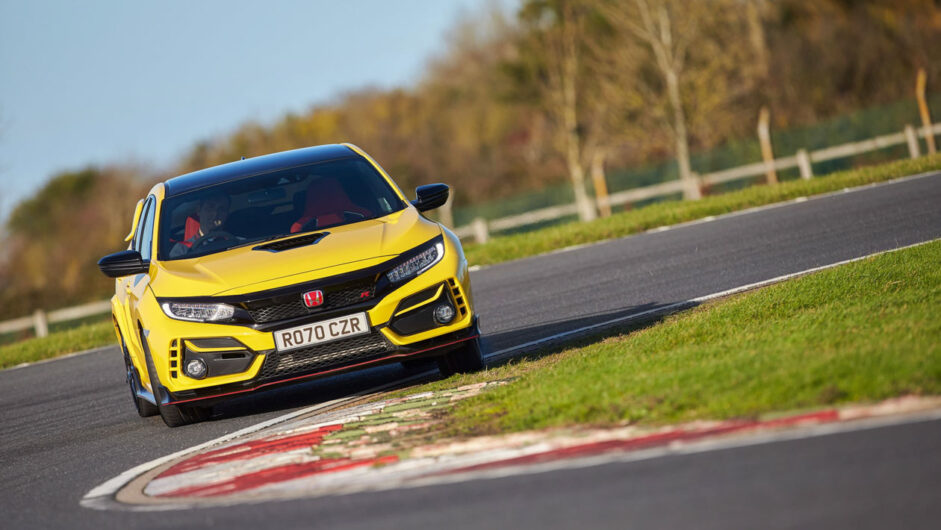
When you find the right road, and really go for it, the Type R’s character crystallizes into something viciously hard-edged. The steering is very precise, and the variable ratio now means steering is mainly via your wrists, rather than armfuls of lock. It’s not dripping with feel, but neither does it ever register as being a hindrance to establishing a good rapport with the car. It is now far more poised, and it is more stable, and ruthlessly fast across the ground, summoning tremendous levels of grip, turning in with real keenness and begging the driver to push harder.
And those 20-inch wheels? Well, aside from their relative delicacy over rough roads and kerbs, the ride remains incredibly well calibrated, supple yet taut (to fall into that motoring journalism cliche), an impressive example of Honda’s final calibration capability. This is even more impressive when you find there is barely enough sidewall on those 30-section tyres to brand them. That such a small amount of rubber can contain the Civic’s huge lateral load without total deformation is utter witchcraft (though fail to avoid potholes at your peril).
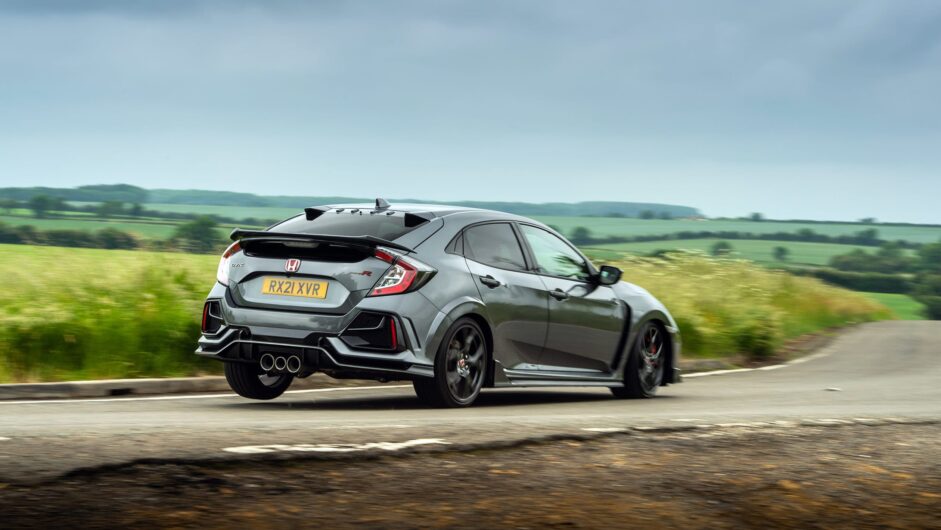
It does all of this yet combines it with the traditional thrills of manual cog shifting and busy footwork, because the best bits of the Type R are when you’re revving the blazes out of it, feeling the front diff working with the front suspension, rather than despite it, to distribute the torque and steering inputs in one suave movement. Rarely, if ever before, has a front-wheel-drive car felt so assured, so incredibly polished when handling so much power.
It’ll oversteer on turn-in if provoked with the brakes, but its default setting is grip, grip and more grip. It’s a big car – every time you climb out to look at it, particularly in profile, it seems more like a sports saloon than a ‘hot hatch’ – and occasionally feels it, trading a smaller hatch’s hyperactive agility for a more grown-up effectiveness, but that shouldn’t be read that the experience is in any way dull. It’s a 272kph riot.
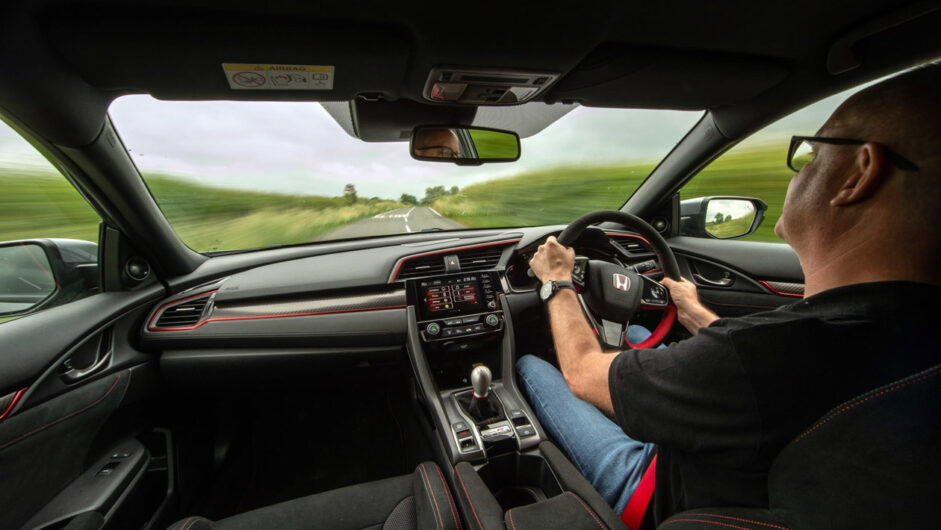
The new variants only expand on the Civic’s stunning driving experience, with the Sport Line doing precisely what it says on the tin by softening off the experience ever so slightly, but never relinquishing the Type R’s underlying capability. Yet it’s the Limited Edition that really blew us away. It’s drop in weight, both in the body and in it’s bespoke forged wheels, only enhance the Type R experience. It’s as focused, as sharp and as engaging as any Porsche 911 GT3, but because you can experience it at speeds lower than those necessary for bigger and more serious driver’s cars is perhaps even more engaging more of the time.
The Limited Edition is a sure-fire future classic, and one we are not at all surprised was over subscribed before even hitting the ground. If you see one, snap it up otherwise we will…
- L/100km and running costs
Recent changes to the way fuel economy is calculated mean the Civic’s 8.5L/100km figure is lower than its old 7.6-odd L/100km, but don’t be fooled – the new WLTP figures are simply more realistic than before, and it’s entirely possible to attain 8.5L/100kmout on the road. Those same WLTP figures quote a low of around 11L/100km, though we’d suggest you expect even lower, particularly if you’re inclined to take your car on track, while higher than 33 should be possible on a steady motorway cruise.
Rivals such as the Golf R and Audi S3 don’t yet have WLTP figures, so both crack the 7L/100km mark when combined with a dual-clutch gearbox, but in our experience many of the hot hatchbacks at this segment in the market are roughly on par for economy, so running the Civic should be little more expensive than its rivals.
At least in terms of fuel, anyway. Our long-term Civic lost several wheels and tyres to pothole and road damage. While the Civic’s dampers may handle those 20-inch wheels and ultra low-profile tyres just fine from a ride quality perspective, they can’t cheat physics.
- Interior and tech
The FK8 Civic’s interior is a major step on from the old car’s, and crucially for a hot hatch, all the really important interior bits in the Type R are spot on: great bucket seats, good pedal weighting including the brake, the tactile alloy gear knob and a lovely, slim, leather steering wheel. It’s an environment that immediately sets the right tone for driving.
Much like the exterior, the interior has been completely redesigned, and rather than repeating another one of Honda’s controversial twin binnacle designs, the new Civic Type R harbours a far more grown up and ergonomically sound layout.
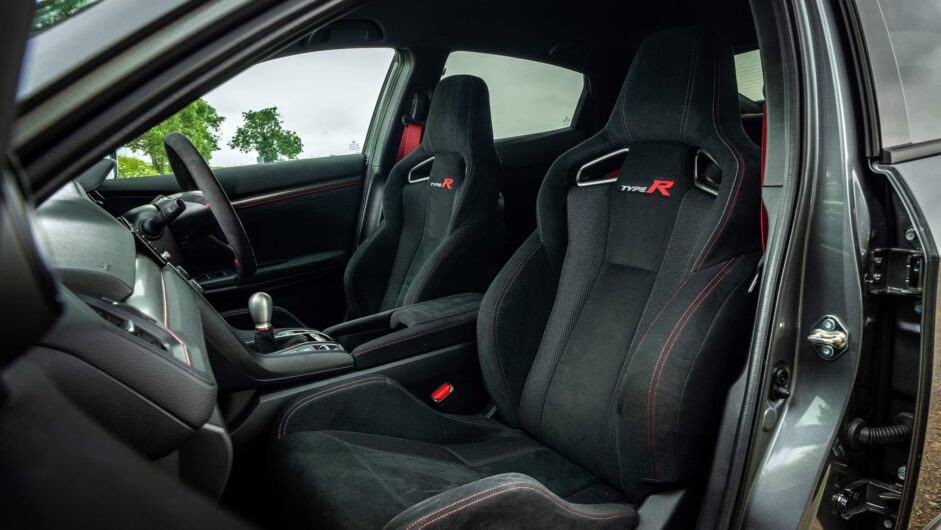
Shared with the standard Civic, the overall dash design is more conservative, but well thought out and surprisingly good quality. The lowered seats and raised centre console give the interior a more cocooning feeling, making you feel like you are sitting in the car, rather than on top of it. The wider body unlocks extra shoulder room, and although the rear is less kid-friendly thanks to room taken up by the multi-link rear suspension, the boot is big and commodious – far larger than most in the class.
Honda’s infotainment system is a drain on the senses however, not adhering to the law of the volume knob. The system is a little slow to respond, while the Garmin-based satnav looks low-rent compared to systems found in the Golf R and Audi S3.
But this is still a Type R at the end of the day, meaning red bucket seats, colour-coded stitching, red accents on the dash and the crucial alloy gearknob are all present and correct.
- Design
The ultra hot hatch is rarely interested in such mundane things as subtlety, but compared to even the outlandish Focus RS, the Civic Type R has taken aggressive styling to another level. The foundation for all this visual chaos is an equally complex base car, with standard model Civics looking super aggressive, even in lowly three-cylinder form. The all-new hatchback body is based on a new global Civic saloon, which has influenced the longer, lower silhouette.
Honda’s recent exterior design language is based around a new grill motif, which has spread rapidly throughout the Honda range. In some standard trims this is a massive chrome slab, which connects the headlights and grill together, but in Type R trim is mercifully painted black. From there however the whole design gets increasingly complex, with a scoop in the bonnet, widened wheel arches, huge (mostly fake) front intakes and that enormous rear wing.
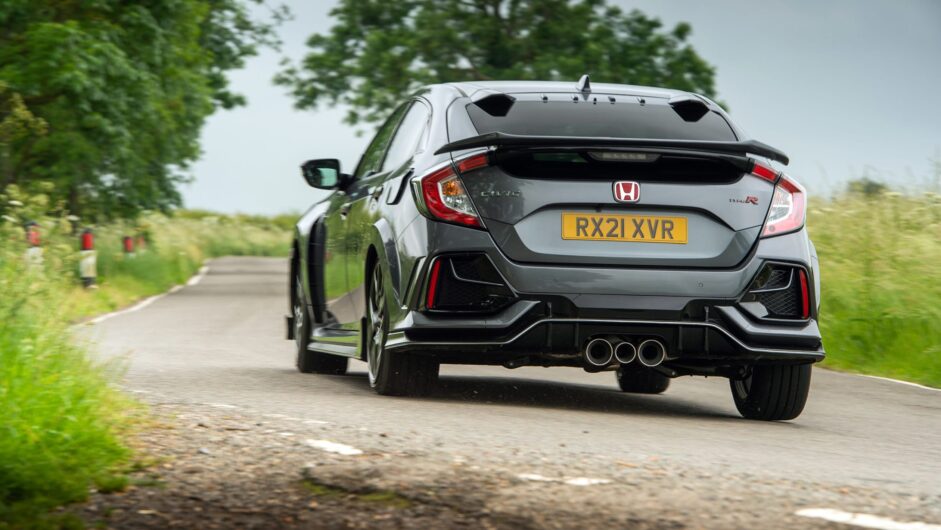
Cast your eye on the roof and you’ll also see some strange humps running from front to rear. These, Honda says, are vortex generators, cleaning up the airflow before it reaches the rear wing. Below the tailgate, triple exhaust tips (curiously similar to those seen on the Ferrari 458 Italia) finish off the rear treatment.
The overall effect is arresting, and makes garish rivals look subtle and subtle rivals invisible. Whether the looks sweeten or sour the whole car is up to the individual, but at least you would never lose it in a car park.
- Honda Civic Type R vs rivals
Honda Civic Type R vs rivals
It might have been one of the most eagerly awaited machines of 2017 but how did Honda’s latest Civic Type R fare when it went up against Ford’s Focus RS and SEAT’s Leon Cupra 300 in our Supertest in issue 241?
The Civic packs 316bhp and 295lb ft of torque and features more wings, vents and scoops than you can shake a stick at but underneath it all there’s a heavily revised chassis with a sophisticated multi-link rear axle and adaptive dampers. And on both road and track it stamped its authority on proceedings with aplomb.
Weights, dimensions and performance data
The Type R couldn’t match the lissom SEAT on the scales – at 1412kg the Honda’s 65kg heavier than the Cupra – but it undercuts the portly Focus by a significant 150kg. Despite this all three cars have a similar power-to-weight ratio but thanks to its four-wheel drive the Focus blitzed the acceleration test, beating the Civic’s 5.9sec 0-100kph time by a clear second. The Type R did have the legs of the lighter SEAT though, beating the Cupra by 0.3sec.
Where the Type R really scored though was in its braking ability, especially up against the heavier Focus, with the Civic’s 85.1 metre stopping distance from 160kph besting the RS by 15 metres.
Lap time and track driving
While the Civic was a great companion on the road its superiority was further demonstrated at Bedford’s West Circuit where its 1:26.2 lap time was 0.7sec quicker than the RS’s and 1.6sec better than the SEAT’s.
A combination of tenacious grip, a punchy power unit and precise steering saw it carry serious speed through the quick corners but its ability to turn-in and resist understeer at the Hanger Hairpin and the Bank Complex was also deeply satisfying. Ultimately it was a dominant performance from the Civic on both road and track.
Supertest data and specs table
| Ford Focus RS | Honda Civic Type R | SEAT Leon Cupra 300 | |
| Engine | In-line 4-cyl, 2261cc, turbo | In-line 4-cyl, 1996cc, turbo | In-line 4-cyl, 1984cc, turbo |
| Power | 345bhp @ 6000rpm | 316bhp @ 6500rpm | 296bhp @ 5500rpm |
| Torque | 347lb @ 2000-4500rpm | 295lb @ 2500-4500rpm | 280lb @ 1800-5500rpm |
| Transmission | Six-speed manual, four-wheel drive, torque vectoring rear differential | Six-speed manual, front-wheel drive, limited-slip differential | Six-speed manual, front-wheel drive, electronically controlled LSD |
| Tyres | 235/35 R19 front and rear, Michelin Pilot Super Sport | 245/30 R20 front and rear, Continental SportContact 6 | 235/35 R19 front and rear, Pirelli P Zero |
| Height/width | 1472mm/1823mm | 1434mm/1877mm | 1423mm/1810mm |
| Weight | 1569kg as tested (1547kg claimed) | 1412kg as tested (1380kg claimed) | 1347kg as tested (1300kg claimed) |
| Power-to-weight | 223bhp/ton using test-car weight (227bhp/ton claimed) | 227bhp/ton using test-car weight (233bhp/ton claimed) | 223bhp/ton using test-car weight (231bhp/ton claimed) |
| 0-100kph | 4.9sec as tested (4.7 to 62 claimed) | 5.9sec as tested (5.8 to 62 claimed) | 6.2sec as tested (5.7 to 62 claimed) |
| Top speed | 267kph (claimed) | 272kph (claimed) | 250kph (limited) |
| evo L/100km | 12.7 (average over duration of test) | 10.6 (average over duration of test) | 10.2 (average over duration of test) |
| Basic price | $44,160 | $42,422 | $41,273 |
This article originally appeared at evo.co.uk
Copyright © evo UK, Autovia Publishing


